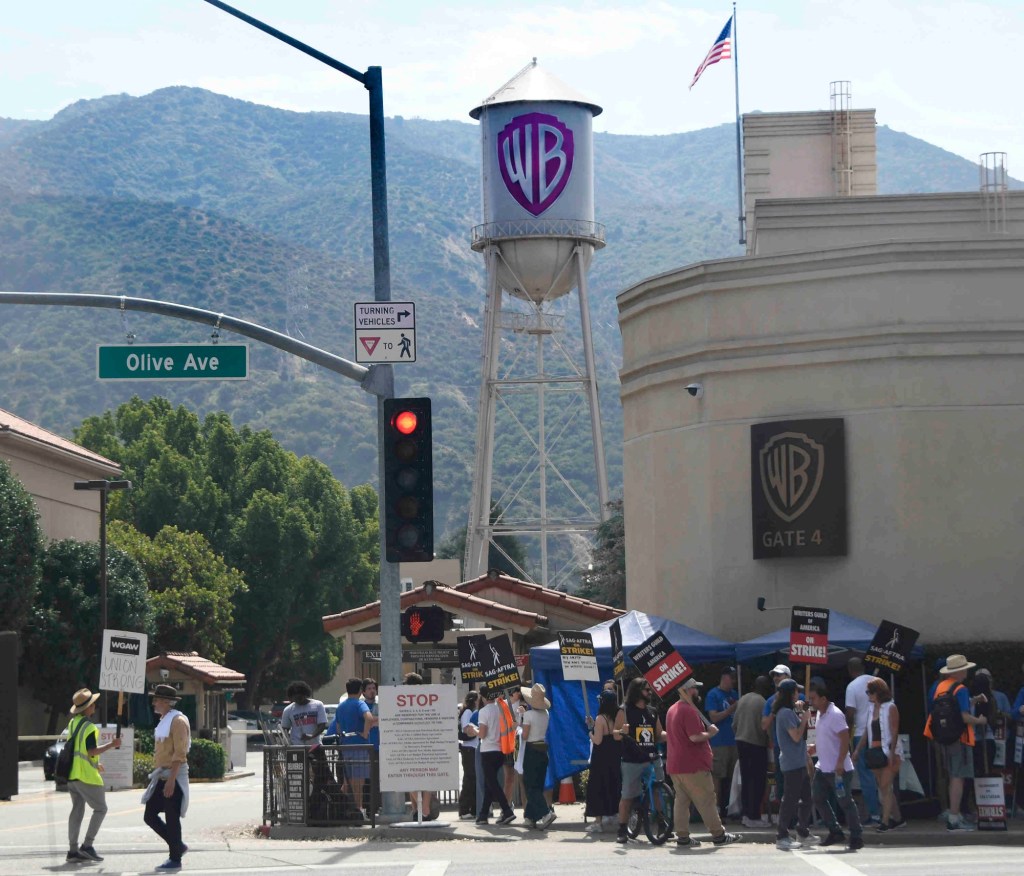With billions of dollars leaking out of the Los Angeles County economy due to Hollywood productions leaving for better deals, plus work stoppages stemming from labor disputes, the question becomes what can be done to stop the bleeding.
One attempt is being put forth by the L.A. County Board of Supervisors, who want to attract more filming in unincorporated areas and within county facilities by reducing production company payroll and sales taxes, streamlining permits, and possibly creating a fund to assist productions with developing new technologies, including artificial intelligence (AI) and virtual reality.
The board will consider a motion to study how to offer these and other incentives — designed to attract more movie, TV and commercial shoots — at its Tuesday, Sept. 26 meeting that starts at 9:30 a.m. at the Kenneth Hahn Hall of Administration, 500 W. Temple St. The meeting is also streamed live.
The motion is co-authored by Third District Supervisor Lindsey Horvath and Fifth District Supervisor Kathryn Barger.
“The entertainment industry is central to our identity as Angelenos, to a thriving creative economy, and to countless households across our region,” said Horvath in an emailed response on Friday, Sept. 22. “We need to do everything we can to incentivize local productions to keep TV, film, and commercials firmly rooted in Los Angeles County, home to the incredible backdrops that bring the entertainment we love to life.”
The two supervisors include a plethora of incentives in the detailed motion.
Besides tax breaks, the motion would clear the way for location scouts to explore new shooting sites and backdrops, including inside the flood control channels managed by the county Public Works Department. One approach might be to remove fees and permit requirements for production visits, while still allowing for the county to be reimbursed for staff time used in escorting production teams through flood waters and debris channels.

The motion also seeks to explore how to bring in more foreign film production shoots and also waive fees for student productions in unincorporated areas, or on county property. These fees are assessed by the county and also by FilmLA, the agency that regulates film shoots in greater Los Angeles.
“I want to support the entertainment industry, especially the writers and other striking unions, by making sure our county stands ready when the strike ends,” said Barger in an emailed response on Friday. “This motion is also about ensuring that L.A. County will be a destination for filming rather than continue having film and television shoots move out of our county because it is easier and cheaper to do so.”
Before the board can implement these incentives, it calls for hiring an economic development firm to study how to get there, and to determine the impact to the county’s budget, according to the motion.
First on the list is the long-term problem of studios taking productions to other states that offer more lucrative incentives and tax breaks.
“Unfortunately, given the high costs of doing business in California and the county, the entertainment business has slowly begun moving productions out of state, and out of country,” the motion stated.
The entertainment industry sector of the L.A. County economy accounts for one million jobs, $114 billion in labor income and $38 billion in tax revenues, according to the 2023 Otis Report on the Creative Economy.
Hollywood became the center of the entertainment industry when the first movie studio was established in 1911, the motion explained, and grew exponentially. By as early as the 1920s, it was the center of the industry. Studios have since located in Burbank and other parts of the San Fernando Valley and Westside.
Recently, strikes by industry workers have produced a double feature of economic woes.
The Writers Guild of America (WGA) went on strike on May 2 over decreasing revenues from streaming content. On July 14, the Screen Actors Guild-American Federation of Television and Radio Artists (SAG-AFTRA) went on strike, joining the WGA. Productions stopped, except for reality TV and foreign movie houses.
Local on-location film production declined in the second quarter of 2023, down 28.8% in the second quarter over the same period last year, according to FilmLA. It marked the sixth consecutive quarterly production drop and was aggravated by the WGA strike. Talks have intensified since Wednesday and some are predicting a possible end to the Writers Guild strike.
Economists from the Los Angeles County Economic Development Corporation (LAEDC) estimate the two strikes could cost L.A. County $4 billion, due to lost wages, canceled filming dates and damaging impacts to local businesses that support the entertainment industry.
“We need to send a clear message that Los Angeles County should remain a priority for the entertainment industry,” added Barger.




